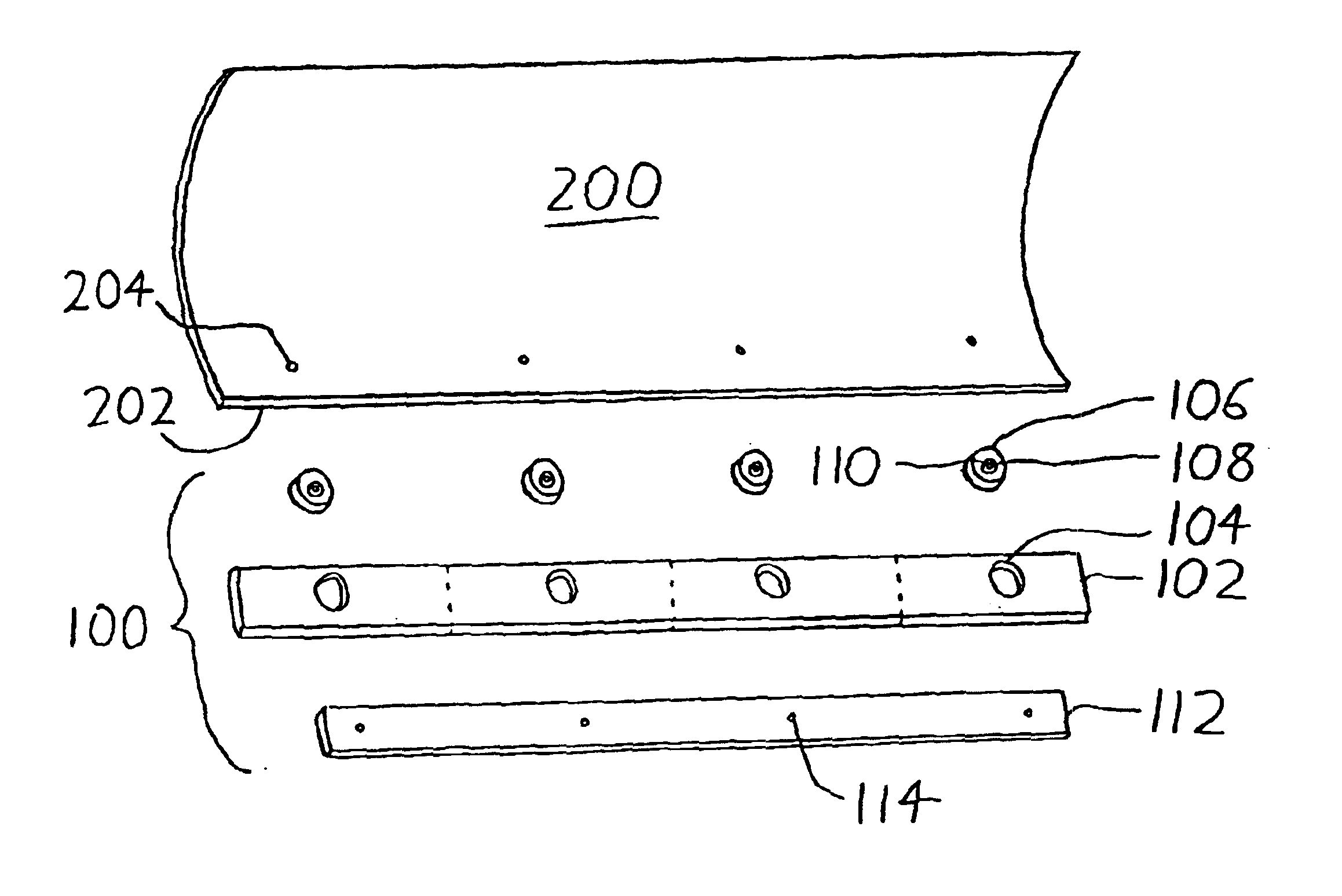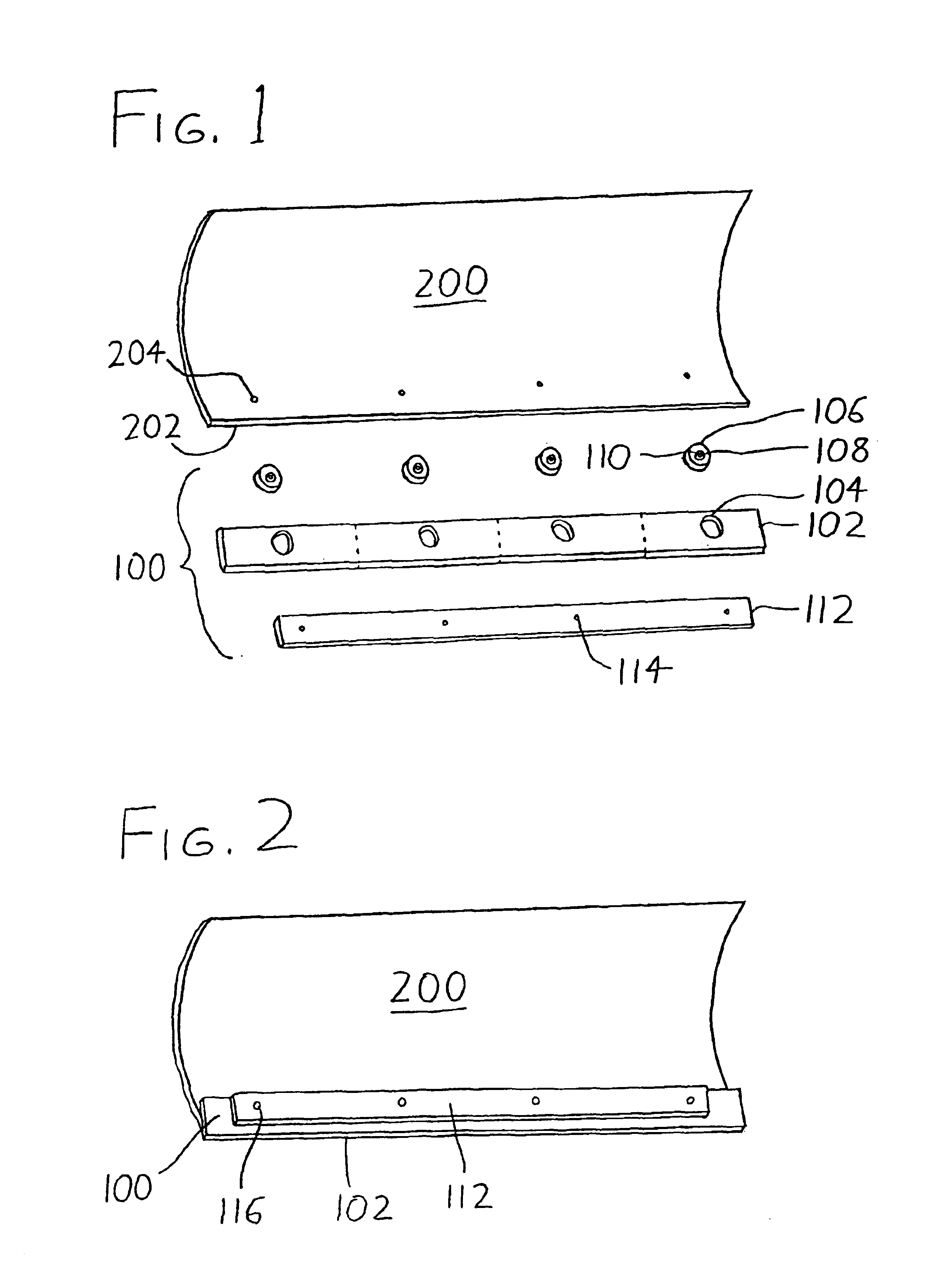Plow cutting edge
a cutting edge and blade technology, applied in the field of plowing blades, can solve the problems of generating undesirable costs, causing significant cost, and ordinary wear from scraping against the roadway, and achieve the effect of not binding or rapidly wear
- Summary
- Abstract
- Description
- Claims
- Application Information
AI Technical Summary
Benefits of technology
Problems solved by technology
Method used
Image
Examples
Embodiment Construction
[0014]A preferred version of the invention is depicted in the accompanying drawings. Referring initially to the exploded assembly view of FIG. 1, a moldboard 200 has a lower edge 202 along which are spaced a number of cutting edge mounting holes 204. A cutting edge 100 then includes:
[0015](1) A cutting edge blade 102, which is generally similar to a standard cutting edge save that it has a number of receiving apertures 104 defined along its length, each receiving aperture 104 being generally coaxial with one of the cutting edge mounting holes 204 on the lower edge 202 of the moldboard 200;
[0016](2) A number of elastic bushings 106, each of which has an outer diameter sized to be closely received within one of the receiving apertures 104, and an inner diameter lined with a metal bushing 108 with a through hole 110 sized similarly to a cutting edge mounting hole 204; and
[0017](3) A mounting member 112, shown in FIGS. 1 and 2 in the exemplary form of a plate, which has a number of moun...
PUM
 Login to View More
Login to View More Abstract
Description
Claims
Application Information
 Login to View More
Login to View More - R&D
- Intellectual Property
- Life Sciences
- Materials
- Tech Scout
- Unparalleled Data Quality
- Higher Quality Content
- 60% Fewer Hallucinations
Browse by: Latest US Patents, China's latest patents, Technical Efficacy Thesaurus, Application Domain, Technology Topic, Popular Technical Reports.
© 2025 PatSnap. All rights reserved.Legal|Privacy policy|Modern Slavery Act Transparency Statement|Sitemap|About US| Contact US: help@patsnap.com


